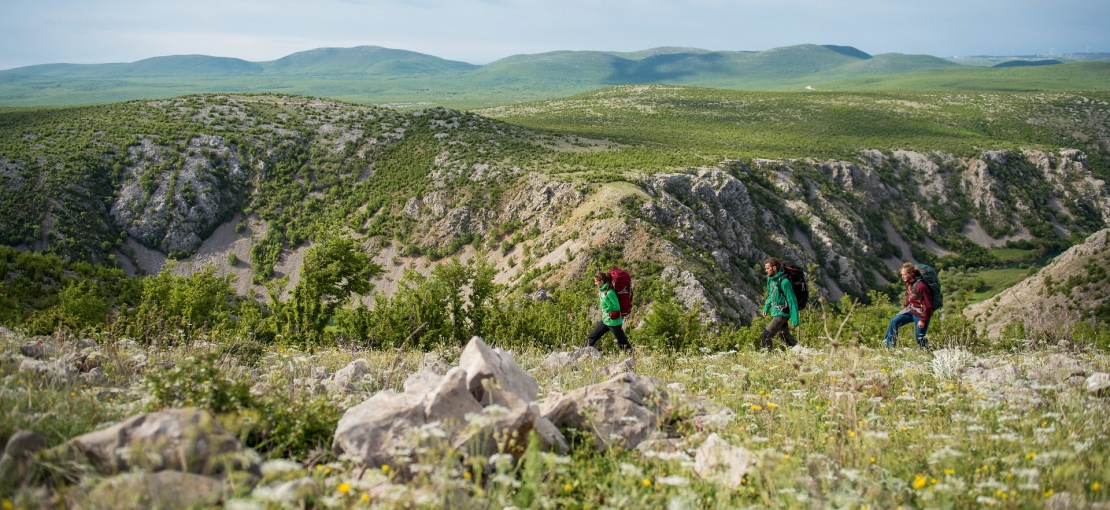
Respect for people and nature
Preventative approach as a guiding principle
The entire life cycle of outdoor products has an impact on humans and nature, which is why the development of outdoor products is also an environmental issue.
We at VAUDE support the philosophy and the principles of the preventative approach, even though we cannot yet implement this in all areas.
Stricter standards with bluesign®
In particular, the complexity of the materials we use in our textile manufacturing chain requires us to rely on external support. Here we work with bluesign® Technologies AG. This system works with input stream management, which is based on the principle of "Best Available Technology" (BAT). The bluesign® system currently offers the world's most stringent textile standard.
VAUDE is certainly one of the few outdoor manufacturers who rate their products in terms of environmental friendliness. All in all, our approach puts us among the leading companies in the outdoor industry in terms of sustainability.
Further action still needed
This doesn’t mean that there isn’t potential for optimization and action across all phases of our products’ life cycles.
| GRI: | G4-14 |
| GRI: | DMA Products and Services |
Product design lays the foundation
Product design lays the foundation for the sustainability of a product. It determines whether a product can be repaired or recycled, or how it must be disposed of at the end of its life cycle.
Environmental impact in material production
The manufacturing of materials that are used for outdoor products has a serious impact on the environment; most of the materials used by VAUDE are made from synthetic fibers.
These are derived from petroleum and processed requiring a great amount of energy, water and chemicals. They are then processed into fabrics, dyed, and usually chemically treated again to provide them with the desired technical performance such as water repellency and UV protection.
Preventative approach in the selection of materials
When selecting materials, we always act according to the preventative approach when we have alternatives with comparable performance available. For example, we do not use materials with nanotechnology.
If there is concrete evidence of negative environmental aspects, we proactively seek out solutions - even before there are legal regulations. We are active on various committees and are working to find, for example, alternatives to the use of fluorocarbons (see also "strategy against excessive chemicals"), and to support the humane production of goose down and duck down. see “light as a feather heat storage - Wonders of Nature".
Amount of resources in production
In the production process, materials are joined together (sewn or HF welded) to create finished VAUDE products. This requires energy, water and chemical additives which result in waste, wastewater and emissions.
Packaging is also a factor in resource consumption and waste. Transport is responsible for emissions, primarily due to fuel consumption - see "Climate Neutral Transport".
Up to 50 percent of the climate footprint comes from the usage phase
A large portion of a textile product’s climate footprint is produced during the usage phase - up to 50 percent. As a manufacturer, we have little impact on how customers behave with our products, and attempt to inform consumers and to raise awareness - see "responsibility of the customer".
As consumers, we rarely think about the impact on man and nature, or how we will dispose of an item before making a purchasing decision. Nevertheless, as a manufacturer, we have the responsibility for the disposal and recycling of our products. (see also the article "Responsibility for Disposal").





